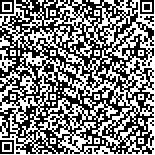本文已被:浏览 1063次 下载 566次
Received:November 13, 2019 Published Online:July 20, 2020
Received:November 13, 2019 Published Online:July 20, 2020
中文摘要: 目的 探讨联合临床、CT和放射组学特征预测肺腺癌的表皮生长因子受体(EGFR)和间变性淋巴瘤激酶(ALK)基因突变状态的价值。
方法 回顾性收集深圳市人民医院2017年1月至12月143例经手术病理证实肺腺癌和明确了EGFR及ALK基因状态、且于术前3个月内行CT检查的患者的临床资料。采用单因素分析比较3个临床特征、16个CT特征和94个CT放射组学特征与肺腺癌的EGFR和ALK基因突变的相关性。将有统计学意义的变量引入多因素Logistic回归模型分析预测EGFR和ALK基因突变状态的独立相关因素,最后作ROC曲线确定其诊断效能。
结果 143例肺腺癌患者中,EGFR突变型共63例(44.1%),野生型共80例(55.9%);ALK突变型共20例(14.0%),野生型共123例(86.0%)。单因素分析显示吸烟状况(P=0.002)、磨玻璃成分(P=0.042)、肿瘤周围肺气肿(P=0.043)、纵隔淋巴结肿大(P=0.020)和放射组学特征中的Size Zone Non Uniformity Normalized(P=0.031)与EGFR突变相关。Logistic回归分析结果显示,吸烟状况(OR=2.775,P=0.014)、纵隔淋巴结肿大(OR=2.056,P=0.039)和Size Zone Non Uniformity Normalized(OR=1.906,P=0.045)是预测EGFR基因突变的独立危险因素。年龄(P=0.002)、瘤肺界面(P=0.002)、毛刺征(P=0.021)、肿瘤坏死(P=0.000)与ALK突变相关。年龄(OR=2.436,P=0.041)、瘤肺界面(OR=3.367,P=0.032)和肿瘤坏死(OR=7.582,P=0.002)是预测ALK基因突变的独立危险因素。联合临床、CT特征和放射组学特征预测EGFR基因突变的AUC值0.694(95%CI:0.608~0.780),临床和CT特征预测ALK基因突变的AUC值为0.763(95%CI:0.617~0.910)。
结论 联合临床、CT和放射组学特征可以预测肺腺癌的EGFR和ALK基因突变状态,为临床治疗方案的选择提供决策支持。
Abstract:Objective To investigate the value of the combination of clinical metrics,CT characteristics and radiomic features to predict the epidermal growth factor receptor (EGFR) and anaplastic lymphoma kinase (ALK) gene mutations of lung adenocarcinoma.
Methods The clinical data of 143 patients with lung adenocarcinoma confirmed by operation and pathology,confirmed EGFR and ALK gene status,and performed CT within 3 months before operation were collected retrospectively between January and December 2017 in Shenzhen People′s Hospital.Single factor analysis was used to compare the correlation between EGFR and ALK gene mutations in three clinical features,16 CT features and 94 CT radiologic features.The statistically significant variables were introduced into the multivariate Logistic regression model to obtain the independent risk factors for EGFR and ALK mutation.Diagnostic efficacy was assessed by receiver operating characteristic (ROC) curve.
Results Out of 143 patients with lung adenocarcinoma,63 caes(44.1%) were EGFR mutants and 80 cases(55.9%) were wild-type.There were 20 cases (14.0%) of ALK mutation and 123 cases (86.0%) of wild-type.Univariate analysis showed that smoking status (P=0.002),ground glass composition (P=0.042),peritumoral emphysema(P=0.043),mediastinal lymphadenopathy (P=0.020),and a radiomic feature named Size Zone Non Uniformity Normalized(P=0.031) were associated with EGFR mutations.Logistic regression analysis identified that smoking status (OR=2.775,P=0.014),mediastinal lymphadenopathy (OR=2.056,P=0.039) and Size Zone Non Uniformity Normalized (OR=1.906,P=0.045) were independent risk factors for EGFR gene mutations.Age (P=0.002),tumor-lung interface(P=0.002),spicule sign (P=0.021),tumor necrosis (P=0.000) were associated with ALK mutations.Age(OR=2.436,P=0.041),the boundary between tumor and lung (OR=3.367,P=0.032) and tumor necrosis (OR=7.582,P=0.002) were independent risk factors for ALK gene mutations.Areas under the ROC curve (AUC) of combination with clinical metrics,CT characteristics and radiomic features to predict EGFR were 0.694(95%CI:0.608-0.780).The AUC value of ALK gene mutation predicted by clinical and CT features was 0.763 (95% CI:0.617-0.910).
Conclusions Combination of clinical metrics,CT characteristics and radiomic features can predict the EGFR and ALK gene mutation status of lung adenocarcinoma and provide decision support for clinical treatment selection.
keywords: Lung adenocarcinoma Epidermal growth factor receptor Anaplastic lymphoma kinase Radiogenomics
文章编号: 中图分类号: 文献标志码:A
基金项目:深圳市科技创新委员会立项项目(JCYJ2018030117021400)
引用文本:
